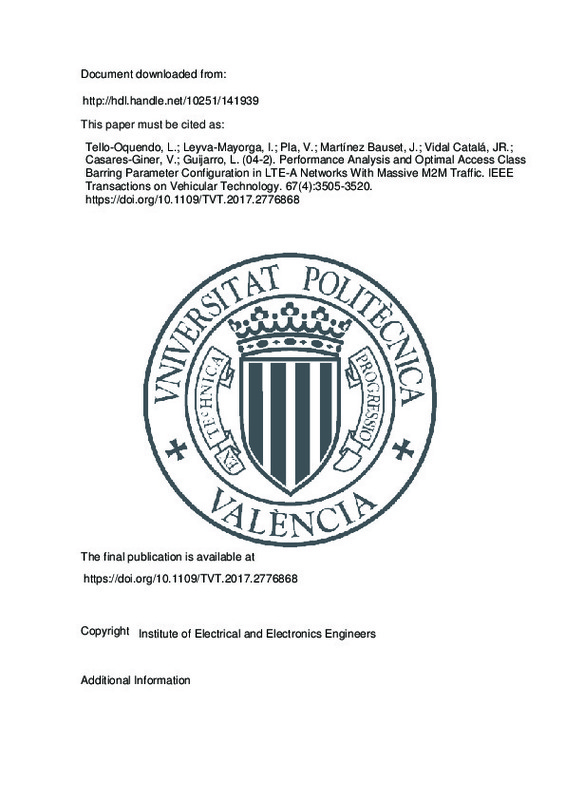JavaScript is disabled for your browser. Some features of this site may not work without it.
Buscar en RiuNet
Listar
Mi cuenta
Estadísticas
Ayuda RiuNet
Admin. UPV
Performance Analysis and Optimal Access Class Barring Parameter Configuration in LTE-A Networks With Massive M2M Traffic
Mostrar el registro completo del ítem
Tello-Oquendo, L.; Leyva-Mayorga, I.; Pla, V.; Martínez Bauset, J.; Vidal Catalá, JR.; Casares-Giner, V.; Guijarro, L. (2018). Performance Analysis and Optimal Access Class Barring Parameter Configuration in LTE-A Networks With Massive M2M Traffic. IEEE Transactions on Vehicular Technology. 67(4):3505-3520. https://doi.org/10.1109/TVT.2017.2776868
Por favor, use este identificador para citar o enlazar este ítem: http://hdl.handle.net/10251/141939
Ficheros en el ítem
Metadatos del ítem
| Título: | Performance Analysis and Optimal Access Class Barring Parameter Configuration in LTE-A Networks With Massive M2M Traffic | |
| Autor: | Leyva-Mayorga, Israel | |
| Entidad UPV: |
|
|
| Fecha difusión: |
|
|
| Resumen: |
[EN] Over the coming years, it is expected that the number of machine-to-machine (M2M) devices that communicate through long term evolution advanced (LTE-A) networks will rise significantly for providing ubiquitous information ...[+]
|
|
| Palabras clave: |
|
|
| Derechos de uso: | Reserva de todos los derechos | |
| Fuente: |
|
|
| DOI: |
|
|
| Editorial: |
|
|
| Versión del editor: | https://doi.org/10.1109/TVT.2017.2776868 | |
| Código del Proyecto: |
|
|
| Agradecimientos: |
This work was supported in part by the Ministry of Economy and Competitiveness of Spain under Grants TIN2013-47272-C2-1-R and TEC2015-71932-REDT. The work of L. Tello-Oquendo was supported in part by Programa de Ayudas de ...[+]
|
|
| Tipo: |
|







![[Cerrado]](/themes/UPV/images/candado.png)


